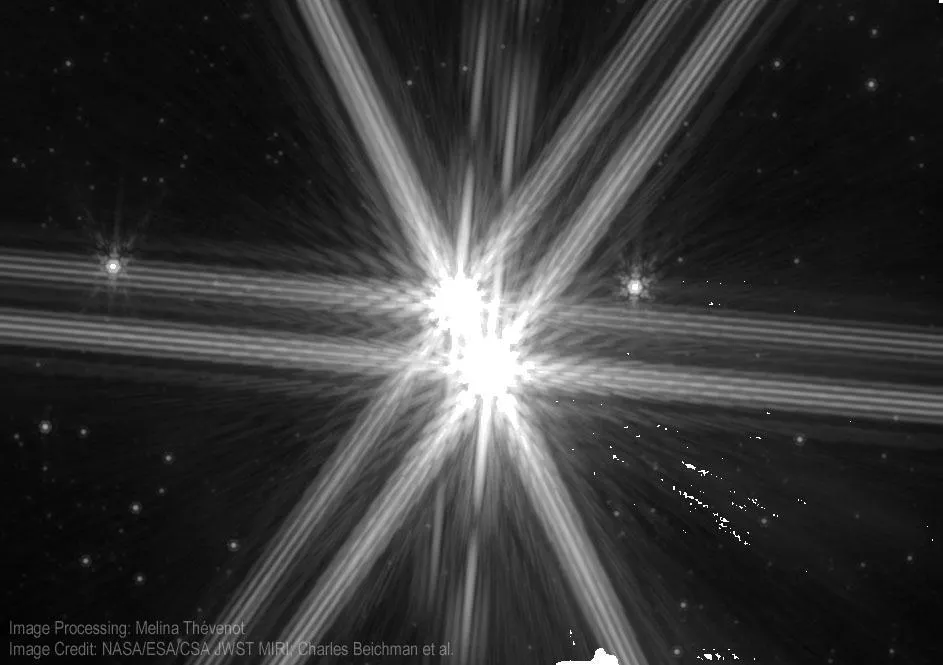Alpha Centauri: Webb's Glimpse of a Potential Neighbor
The Alpha Centauri star system has long captivated humanity as our closest stellar neighbor beyond the Sun. Comprising the binary Alpha Centauri A and B, along with the fainter Proxima Centauri, it's a prime target in the quest for exoplanets. Recent observations by the revolutionary James Webb Space Telescope (JWST) have turned our gaze towards this system, yielding intriguing, albeit preliminary, results.
Unveiling a Promising Candidate
Using its highly sensitive Mid-InfraRed Instrument (MIRI) and its coronagraphic capabilities, JWST conducted observations during its Cycles 1 and 3 (programs 1618 and 9252). These efforts were specifically aimed at detecting exoplanets through direct imaging. What they found was exciting: a promising candidate gas giant planet orbiting within the Habitable Zone of a nearby solar-type star.
The data revealed two distinct point-source-like objects in MIRI F1550C coronagraphic data, separated by approximately 1.5 arcseconds. Their positions are consistent with an object on a bound 1.5 AU semi-major axis orbit. While the proposal identified the primary target as Alpha Centauri, the scientific community is urged to hold excitement until confirmation.
The Hurdles of Direct Imaging
Despite the thrilling prospect, the observations faced significant challenges. Both the Cycle 1 and 3 observations were plagued by guide star failures, which limited the data collection to only one telescope angle roll per epoch. This limitation is crucial:
"The lack of contemporaneous two-roll sequences degrades the ability to reject speckle artifacts and thus to confirm that our closest solar-type neighbor is orbited by a giant planet heated by the central star."
Speckle artifacts are residual light from the star itself that can mimic the faint signal of a planet. Multiple telescope rolls allow astronomers to differentiate between true celestial objects and these instrumental artifacts, which remain stationary relative to the telescope's optics. Without this crucial data, definitively confirming the candidate as a bona fide exoplanet remains elusive.
What's Next for Alpha Centauri?
The challenges encountered highlight the cutting-edge nature and immense difficulty of directly imaging exoplanets, especially small ones close to bright stars. However, the pursuit continues. A new proposal (program 9252) aims to address these limitations and gather more robust data.
The Alpha Centauri system itself is a fascinating laboratory. It is well-established that Alpha Centauri is a triple-star system, consisting of Alpha Centauri A and B (two Sun-like stars orbiting each other) and the red dwarf Proxima Centauri, which hosts at least two confirmed planets, including Proxima Centauri b, also in the habitable zone. While the current Webb observation focuses on A or B, the continued study of this entire system promises to unravel more secrets about planet formation in multi-star environments.

The journey to definitively identify and characterize planets around Alpha Centauri is a testament to humanity's enduring curiosity and the incredible capabilities of missions like JWST. As we await further observations, the tantalizing possibility of a gas giant orbiting our nearest solar-type neighbor keeps us looking up.




